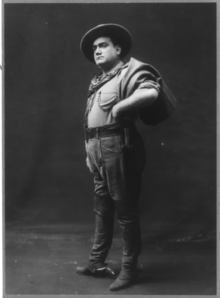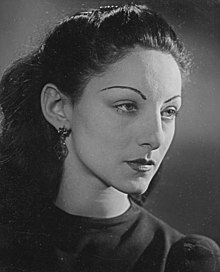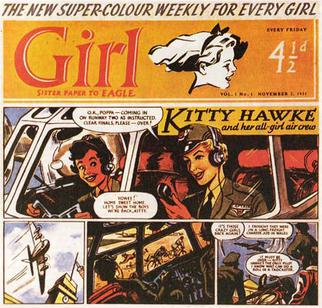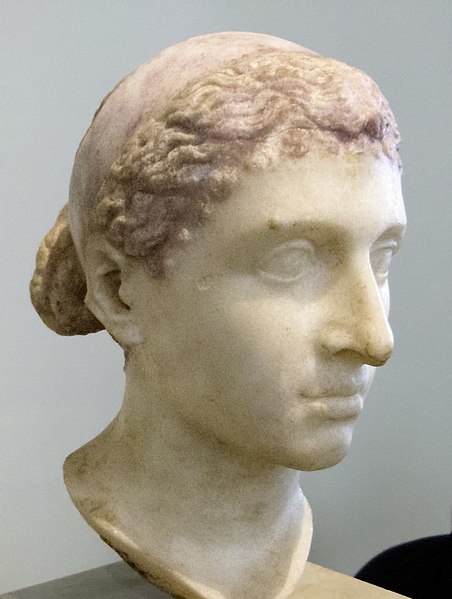 |
| Joseph Mazilier, choreographer of Marco Spada Source Wikipedia |
Pathé Live's HDTV transmissions from the New York Metropolitan Opera and the Bolshoi Theatre are the next best thing to a seat in the stalls and in some ways better because you gain insight into the production through interviews with the artists and the creative team. I wish I could say the same about the Royal Opera House Live Cinema Season but I can't. I was distinctly underwhelmed by the broadcasts of Don Quixote and Giselle and I preferred to watch The Chelmsford Ballet dance The Nutcracker on the night that The Sleeping Beauty was transmitted.
There are a number of reasons why Pathé Live's transmissions are better than the Royal Opera House's. The first is that they use their cameras more intelligently with shots of the full stage for much of the action with close ups only of the solos and pas de deux upon which spectators in the auditorium would wish to focus. Secondly, they employ a personable and knowledgeable presenter in Katerina Novikova, Darcey Bussell is a wonderful dancer and I admire her greatly but she is no presenter. Her quotation from Balanchine and interview with Sir Peter Wright when she introduced Giselle were distinctly laboured, Thirdly, Ms Novikova interviewed David Hallberg who danced the title role and the choreographer Pierre Lacotte. I love Lacotte's story of how Nureyev tore off a bit of the table cloth and promised to make himself for all the rehearsals if Lacotte would only give him the title role. Fourthly, Pathé Live dispenses with the live twitter feed of gushing but often ill-informed superlatives that I find distinctly irritating. Finally, I enjoyed the shots of the foyer during the interval, particularly of the little girl practising her turns oblivious of her international audience and the svelte young lady waving at the camera as she was making her call who was only too aware of it. I also liked the glimpse of the stage after the curtain fell when the cast clapped Hallberg and Evgenia Ovbraztsova and the two principals were peeked between the folds before taking a final bow.
So, Covent Garden, look and learn. This is how HDTV ought to be done. There is nothing wrong with the dancing, choreography, music or designs in London. Bring the artists to the camera and tell us more about the production. Let the audience feel as though it is actually in one of the greatest opera houses of the world.
Turning now to the production, Marco Spada or the Bandit's Daughter is not a new work. It was first performed at the Paris Opera in 1857 and was apparently very successful but it is not a work that is performed very often today. It was choreographed originally by Joseph Mazilier (who is perhaps better known for Paquita and Le Corsaire) to a score by Daniel-François-Esprit Auber. The ballet was revived for the Rome opera house by the French choreographer Pierre Lacotte. Yesterday Lacotte recounted the story of how he and Nureyev were at a restaurant when the discussion turned to Lacotte's work. Nureyev asked Lacotte what he was doing and Lacotte replied that he was working on a new version of Marco Spada. Nureyev had not heard of the work and asked Lacotte for the story. After Lacotte told him the plot Nureyev exclaimed that that was the role for him and that he really wanted it. Lacotte protested that was impossible because Nureyev had engagements all over the world. At that point wrote out and signed the pledge that I have mentioned above. I have been giving some thought as to whether the promise would have been enforceable and I think it would. At least in England and other common law countries. After all the promise to cast Nureyev there and then would have been sufficient consideration. Not a bad scenario to give to first year law students.
Spada was danced by Hallberg who reminds me a little of Nureyev. He is a powerful young man and thrilling to watch. i have never seen him live on stage and I am going to make a point of seeing him whether in London, New York or Moscow. Ovbraztsova is delightful. Sweet and light but with considerable power and energy. She is someone else I really must see. Other major roles were danced by Olga Sminova (the Marchioness Sampietri), Semyon Chudin (Prince Frederici) and Igor Tsvirko (Count Pepinelli). In the first interval Ms Novikova asked Lacotte what were the biggest problems for the Russian dancers in adapting to one of the French classics and he replied speed, precision and detail. Well there was nothing loose or slow about any of yesterday's dancers from the corps upwards.
Unusually, Lacotte had designed the sets and costumes as well as the choreography. They were sumptuous and impressive. I left Wakefield Cineworld feeling that I had actually seen a ballet rather than a reflection of one. Maybe not the fillet steak upon which the lucky people in the Bolshoi feasted but definitely better than the high quality hamburger dished up at the Huddersfield Odeon in January.
So, Covent Garden, look and learn. This is how HDTV ought to be done. There is nothing wrong with the dancing, choreography, music or designs in London. Bring the artists to the camera and tell us more about the production. Let the audience feel as though it is actually in one of the greatest opera houses of the world.
Turning now to the production, Marco Spada or the Bandit's Daughter is not a new work. It was first performed at the Paris Opera in 1857 and was apparently very successful but it is not a work that is performed very often today. It was choreographed originally by Joseph Mazilier (who is perhaps better known for Paquita and Le Corsaire) to a score by Daniel-François-Esprit Auber. The ballet was revived for the Rome opera house by the French choreographer Pierre Lacotte. Yesterday Lacotte recounted the story of how he and Nureyev were at a restaurant when the discussion turned to Lacotte's work. Nureyev asked Lacotte what he was doing and Lacotte replied that he was working on a new version of Marco Spada. Nureyev had not heard of the work and asked Lacotte for the story. After Lacotte told him the plot Nureyev exclaimed that that was the role for him and that he really wanted it. Lacotte protested that was impossible because Nureyev had engagements all over the world. At that point wrote out and signed the pledge that I have mentioned above. I have been giving some thought as to whether the promise would have been enforceable and I think it would. At least in England and other common law countries. After all the promise to cast Nureyev there and then would have been sufficient consideration. Not a bad scenario to give to first year law students.
Spada was danced by Hallberg who reminds me a little of Nureyev. He is a powerful young man and thrilling to watch. i have never seen him live on stage and I am going to make a point of seeing him whether in London, New York or Moscow. Ovbraztsova is delightful. Sweet and light but with considerable power and energy. She is someone else I really must see. Other major roles were danced by Olga Sminova (the Marchioness Sampietri), Semyon Chudin (Prince Frederici) and Igor Tsvirko (Count Pepinelli). In the first interval Ms Novikova asked Lacotte what were the biggest problems for the Russian dancers in adapting to one of the French classics and he replied speed, precision and detail. Well there was nothing loose or slow about any of yesterday's dancers from the corps upwards.
Unusually, Lacotte had designed the sets and costumes as well as the choreography. They were sumptuous and impressive. I left Wakefield Cineworld feeling that I had actually seen a ballet rather than a reflection of one. Maybe not the fillet steak upon which the lucky people in the Bolshoi feasted but definitely better than the high quality hamburger dished up at the Huddersfield Odeon in January.











